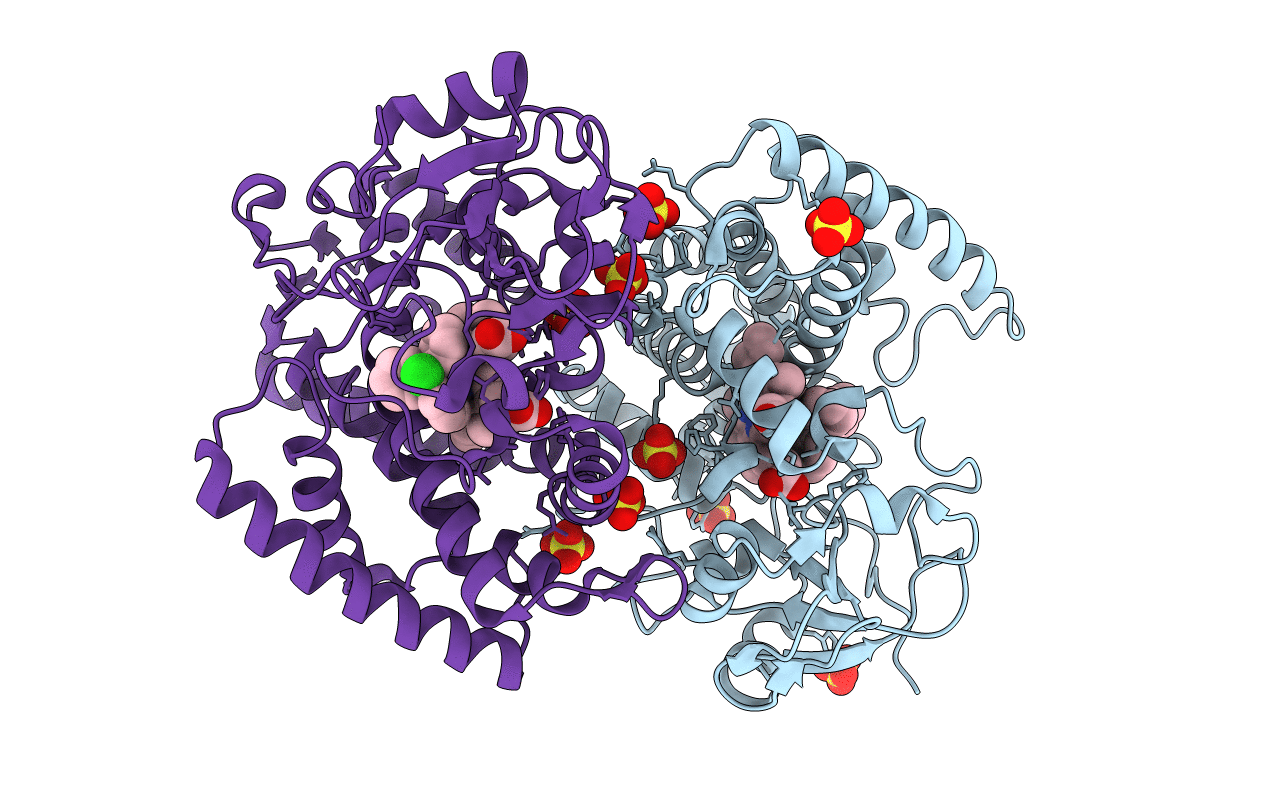
Deposition Date
2014-12-22
Release Date
2015-11-04
Last Version Date
2023-09-27
Entry Detail
PDB ID:
4XE3
Keywords:
Title:
OleP, the cytochrome P450 epoxidase from Streptomyces antibioticus involved in Oleandomycin biosynthesis: functional analysis and crystallographic structure in complex with clotrimazole.
Biological Source:
Source Organism:
Streptomyces antibioticus (Taxon ID: 1890)
Host Organism:
Method Details:
Experimental Method:
Resolution:
2.65 Å
R-Value Free:
0.25
R-Value Work:
0.20
R-Value Observed:
0.20
Space Group:
C 2 2 21


